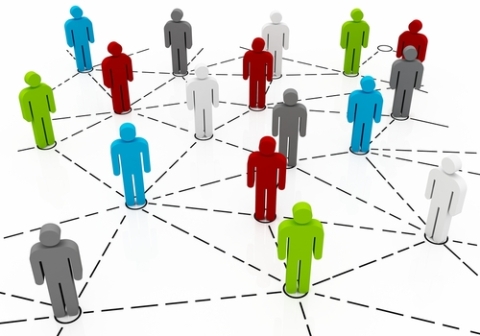Last week, we highlighted Google’s patent of their new “like” content sharing feature. In that post, we also noted that the new feature may be Google’s ongoing efforts to data mine social media signals to produce more organic search engine results pages (SERP). The feature is similar to Facebook’s Open Graph Protocol, which is attempting to revolutionize the way businesses approach their markets. With this feature, Facebook is attempting to get extend it’s outreach in a big way. Businesses should be aware of what it has to offer. If your business is trying to reach out to customers, read on.
Facebook’s Open Graph Protocol will allow pages to add “like” buttons, which will translate into social graphs. It’s goal is to integrate consumer internet traffic into one giant social graph. This feature provides businesses a unique tracking analytical tool and a digital map of how the market of consumers perceives them. In addition, businesses also have access to a large database of personal information to cross reference with what consumers are “liking” on the web.
How Social Graph Tells A Story
As you build your business and share content, you will build relationships. Understanding your reputation online will help you enhance the applications of social graph.
– Context – tells us who you are through associations and comparisons, as well as who you’re not. How you distinguish yourself from the competition will influence how you’re discovered.
– Nodes – Nodes map out your connections with others. The more nodes you are connected with, the easier it is to identify.
– Sharing – If you share relevant content that others find useful, your reputation will increase. Increasing your reputation in turns increases your chances to building a network of nodes.
How Social Search Changes The Game
When creating a social graph, here are somethings to consider:
– Create social objects: Social objects are things that are searchable on the internet, from people, products, videos, and images. These objects help further define your image.
– Consider location and time: Keep your social graph fresh and relevant. Know your audience and who you want to actively engage. Having an active social community is essential to building information for your social graph. It isn’t useful to mine data on a market that is unrelated or far from you.
– As Google and Facebook continue to mine personal data and search, the web will become more personal.
– Search engines will be more accurate and ease search queries. With the more information that is mined and ranked, search results will think for you. Tracking your personal behavior and tastes for SERP is what is in store.
Social graph has an important place in the future business marketing strategy. With unprecedented access to personal information and behavior, marketers and advertisers are only left with how to approach such data effectively. With Google’s recent patent, businesses should also be on the look out for “Google Graphs” sometime in the near future.
Brand reputation and presence is key in this social world. Having a weak social graph roughly means no one has an opinion about your services or products. Consequently, this means searching for your brand is difficult and reinforces the importance of social media presence.
Written by: Daniel T.

